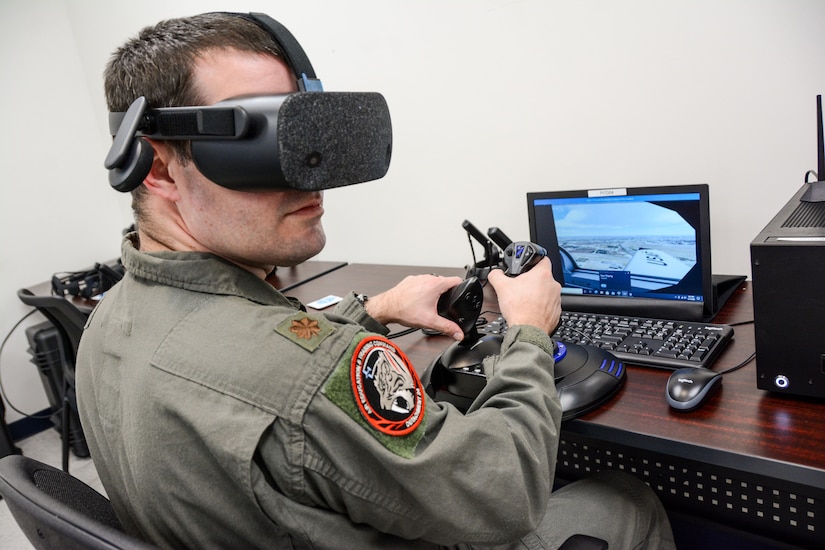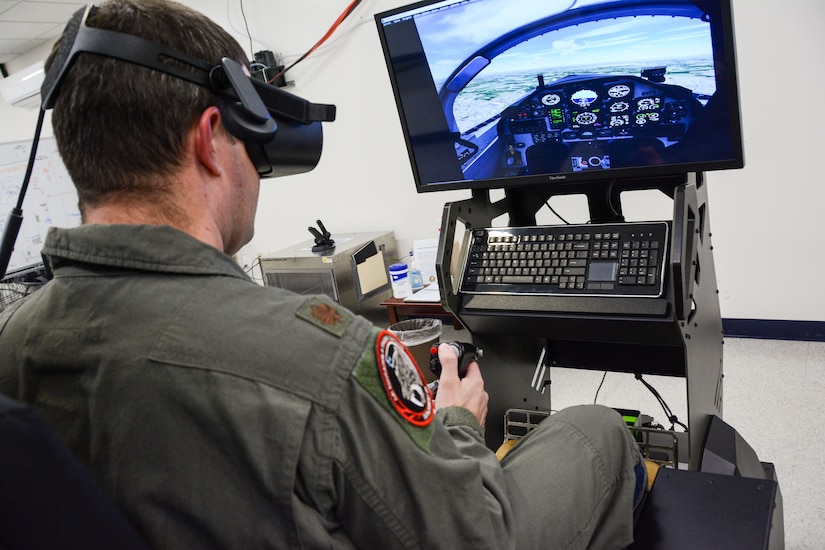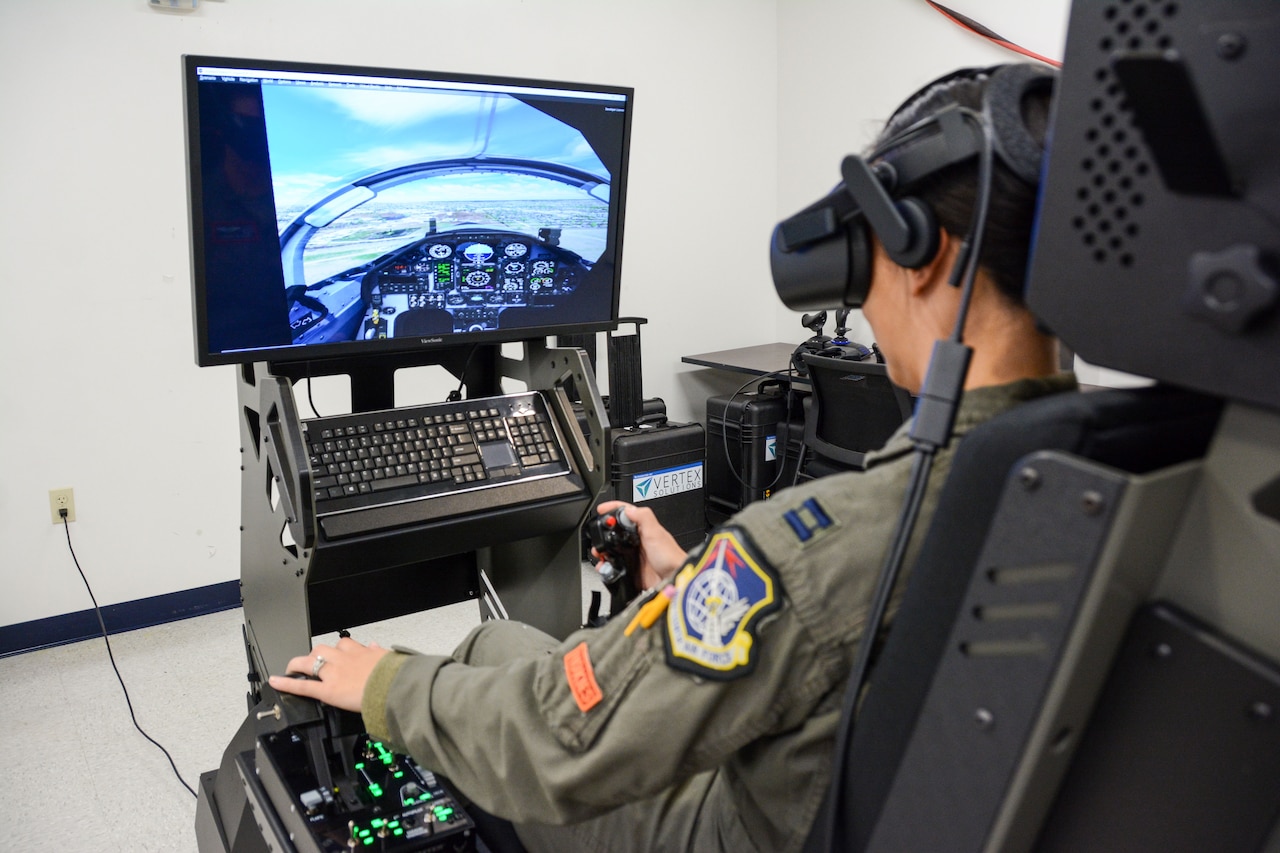Dec. 8, 2020 | , DOD News

Traditionally, pilot flight instruction involves a combination of simulators and actual flying, said Air Force Lt. Col. Eric Frahm, a program manager for the Defense Innovation Unit.
However, a shortage of pilots throughout the Defense Department has limited the number of flight instructors who can give one-on-one training, he said. Also, it is cost prohibitive to build more simulators because each one costs about as much as an actual aircraft.
While JTS isn't meant to replace simulators or real-time flight training, it promises to augment existing systems and accelerate the pace of training, significantly reducing the cost to train new pilots, Frahm said.
The software powering JTS uses a combination of virtual reality, artificial intelligence and machine learning and commercial off-the-shelf items, he said. Controls similar to joysticks are plugged into the system using ordinary USB connections.
Students can take the laptops home and train on them at their own pace or use them at work. A variant of JTS that is more sophisticated features a specialized gaming chair and realistic flight controls that mimic a cockpit, he said.

The AI-powered software enables students to practice flying on their own without an instructor present. However, JTS can also be used with an instructor who is virtually present, and that instructor could monitor a number of students simultaneously, potentially saving flight instructor man-hours.
"What we're trying to do is change the instruction from a teacher-centered model to more of a learner-centered training model," he said.
DIU aided the Air Force's effort to produce JTS by partnering with industry, he said. "We partnered with four different companies. Each brought a component of the broader technology that we needed to create this device and the surrounding ecosystem that will support it."
Vertex Inc. built the software and the hardware, which includes the specialized gaming chair, he said.
Google is providing cloud infrastructure and cybersecurity. These computers are streaming a huge array of data that will be processed by a number of applications residing in the cloud, he said.


CAE Inc. is building a learning management system that will monitor the competencies that the students learn using the devices and will manage the overall training process, he said
Discovery Machine Inc. is building an AI-based structure that will supplement the human instructors and monitor and coach students as they perform aerial maneuvers, he said.
Over the next year, DIU will deploy about 50 devices to Randolph Air Force Base, Texas, and Vance Air Force Base, Oklahoma, he said. The devices will be used to train students on the T-6 and T-38 aircraft.
"Our team will collect detailed feedback from everyday instructors and students to understand how the system performs for them," he said. "We'll incorporate that feedback into at least three redesigns of the hardware and countless revisions of the software. In the end, we want a system that will be flexible, adaptable, scalable and speeds the rate of competency attainment within our pilot force."
When JTS is up and running in the next year, the goal is to eventually expand the platform to provide training for all types of fixed-wing aircraft and helicopters, to include remotely piloted aircraft, he said.

JTS draws upon the lessons learned by its predecessor, the Air Force's Pilot Training Next Program, or PTN, said Air Force Lt. Col. Steve C. "Tiger" Briones, 19th Air Force A5 deputy director for Innovation and Technology and program manager for Pilot Training Transformation.
PTN was first established in 2018 in Austin, Texas, and moved to Randolph Air Force Base in late 2019, Briones said.
Three classes of PTN graduates are currently flying in units throughout the Air Force, Navy and the United Kingdom's Royal Air Force and navy, Briones mentioned.
Briones stated that students and instructors have been impressed by PTN and he thinks that the new JTS devices will advance their aviation skills much more quickly than those who don't use them.






No comments:
Post a Comment